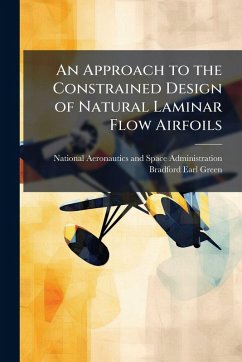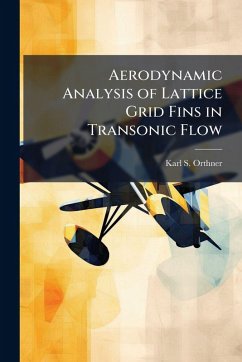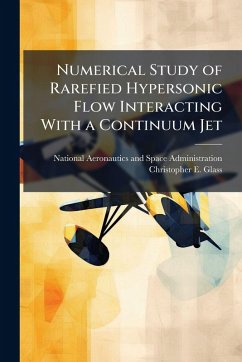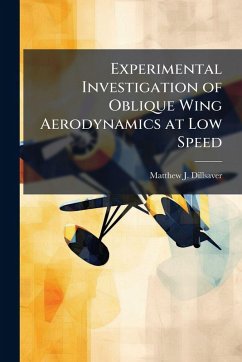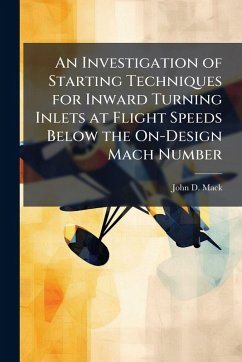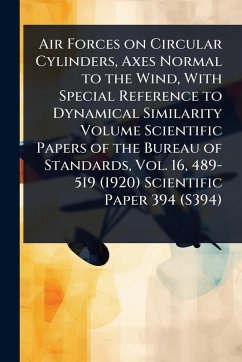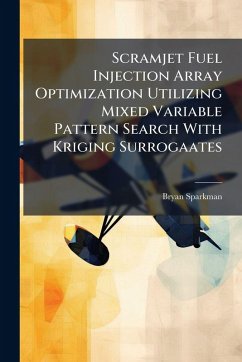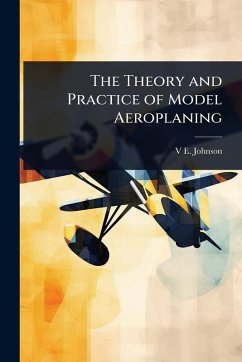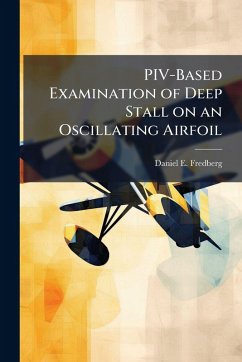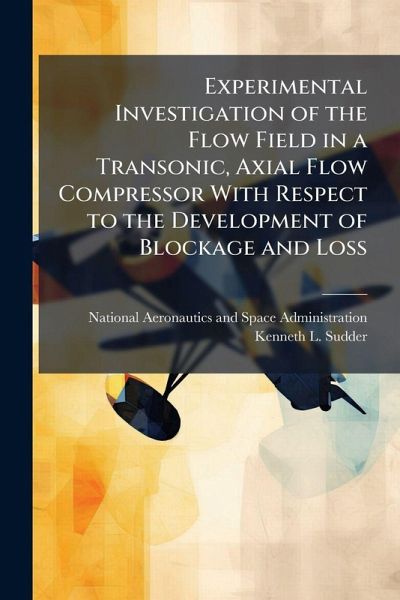
Experimental Investigation of the Flow Field in a Transonic, Axial Flow Compressor With Respect to the Development of Blockage and Loss

PAYBACK Punkte
11 °P sammeln!
A detailed experimental investigation to understand and quantify the development of loss and blockage in the flow field of a transonic, axial flow compressor rotor has been undertaken. Detailed laser anemometer measurements were acquired upstream, within, and downstream of a transonic, axial compressor rotor operating at design and off-design conditions. The rotor was operated at 100%, 85%, 80%, and 60% of design speed which provided inlet relative Mach numbers at the blade tip of 1.48, 1.26, 1.18, and 0.89 respectively. At design speed the blockage is evaluated ahead of the rotor passage shoc...
A detailed experimental investigation to understand and quantify the development of loss and blockage in the flow field of a transonic, axial flow compressor rotor has been undertaken. Detailed laser anemometer measurements were acquired upstream, within, and downstream of a transonic, axial compressor rotor operating at design and off-design conditions. The rotor was operated at 100%, 85%, 80%, and 60% of design speed which provided inlet relative Mach numbers at the blade tip of 1.48, 1.26, 1.18, and 0.89 respectively. At design speed the blockage is evaluated ahead of the rotor passage shock, downstream of the rotor passage shock, and near the trailing edge of the blade row. The blockage is evaluated in the core flow area as well as in the casing endwall region. Similarly at pm speed conditions for the cases of (1) where the rotor passage shock is much weaker than that at design speed and (2) where there is no rotor passage shock, the blockage and loss are evaluated and compared to the results at design speed. Specifically, the impact of the rotor passage shock on the blockage and loss development, pertaining to both the shock/boundary layer interactions and the shock/tip clearance flow interactions, is discussed. In addition, the blockage evaluated from the experimental data is compared to (1) an existing correlation of blockage development which was based on computational results, and (2) computational results on a limited basis. The results indicate that for this rotor the blockage in the endwall region is 2-3 times that of the core flow region and the blockage in the core flow region more than doubles when the shock strength is sufficient to separate the suction surface boundary layer. The distribution of losses in the care flow region indicate that the total loss is primarily comprised of the shock loss when the shock strength is not sufficient to separate the suction surface boundary layer. This work has been selected by scholars as being culturally important, and is part of the knowledge base of civilization as we know it. This work was reproduced from the original artifact, and remains as true to the original work as possible. Therefore, you will see the original copyright references, library stamps (as most of these works have been housed in our most important libraries around the world), and other notations in the work. This work is in the public domain in the United States of America, and possibly other nations. Within the United States, you may freely copy and distribute this work, as no entity (individual or corporate) has a copyright on the body of the work. As a reproduction of a historical artifact, this work may contain missing or blurred pages, poor pictures, errant marks, etc. Scholars believe, and we concur, that this work is important enough to be preserved, reproduced, and made generally available to the public. We appreciate your support of the preservation process, and thank you for being an important part of keeping this knowledge alive and relevant.



